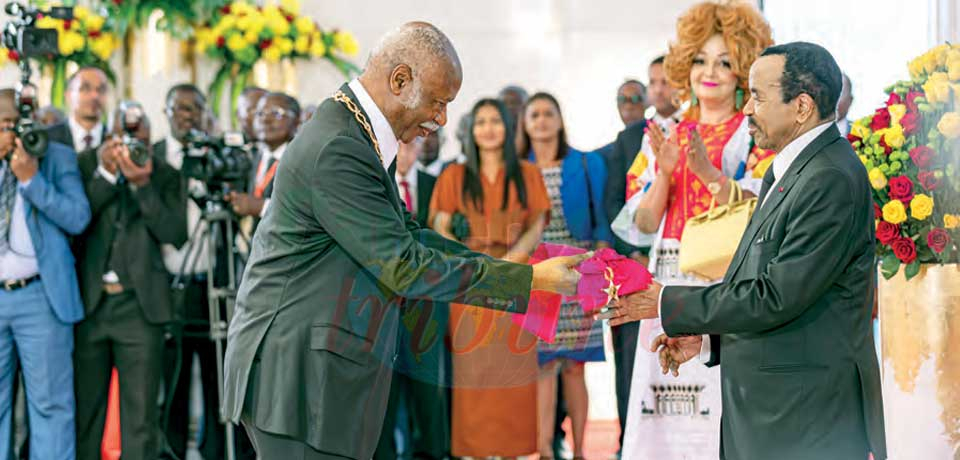“Cameroon Could Rapidly Click An Agricultural Miracle”
- Par Richard Kometa
- 05 Nov 2018 15:51
- 0 Likes

Dr. Michael Njume Ebong looks at the agricultural sector in Cameroon and tells how it can impact on daily life in the years ahead.
How would you assess the agricultural challenges Cameroon is facing today?
The agricultural challenges in Cameroon today can be analyzed from several angles, as I did in my 10-part series of articles on rural development challenges in Africa and Cameroon published in Cameroon Business Today over the past several months. In the case of Cameroon, I would like to draw attention to some myths seemingly dear to our country’s policy makers on how to motivate our farmers to produce more in quantity and quality and to strive ultimately to perform an agricultural miracle for the country. The first mythis that Cameroon’s agriculture can excel beyond subsistence level without investing massively in the development and modernization of the villages, which are the physical setting for smallholder agricultural production accounting for over 80% of the country’s total agricultural output. I consider this a myth because while there is much talk and production of policy documents on agricultural and rural development, there is little of the same concerning the development and modernization of village communities. My reference to this village theme is fundamental to our agriculture. Until the comprehensive development of our villages receives the pre-eminent priority they deserve as our primary economic foundation blocks, they will continue to be sidelined in the provision of public goods and services, such as roads, electrification, water and sanitation, housing, quality schools and health services. It is therefore a myth to expect that we can modernize our agriculture without modernizing our villages. Agricultural development and village development are deeply inter-related and mutually dependent. The second mythis that agriculture and rural development in Cameroon are the exclusive arena of the Ministry of Agriculture and Rural Development (MINADER). As the most important primary economic sector of any country, agricultural development typically responds to progress being made in non-agricultural sectors such as basic infrastructure. The same observation applies to village-based social services, which should be provided by other Ministries, since educated and healthy farmers tend to produce more and better. The third mythis that our agriculture can make great strides as docu mented in our various national strategies, such as the Growth and Employment Strategy Paper (DESP) or the National Agricultural Investment Plan (PNIA) without building the human and professional capacities of the farmers to start with. Yet, this remains a huge national challenge and assignment because at present our village communities are seriously short of the basic modern skills and knowledge required to drive smallholder agricultural modernization, particularly in the present age of climate change and its implications for food production and food security. This challenge, which calls for investments commensurate to the scale of the problem, can be seen in the very few agricultural training schools available to the farmers in the rural areas. The agricultural colleges under MINADER are few and far between. It is only now that government is taking steps to introduce agriculture in the curricula of basic and secondary education. At the tertiary education level, however, it is of some concern that no agricultural school in the country currently enjoys the same reputation and prestige as ENAM, IRIC, or the Polytechnique for example. The fourth mythis that our agriculture can prosper in the long term without a robust national agricultural cooperative movement firmly supported (but not directed) by the State using its sovereign regulatory prerogatives. Cooperative societies are to the farmers what public corporations are to the State. Furthermore, in no country of the world I know of do village smallholders face the market individually; effective farmer organizations are indispensable because historically farmers are the most vulnerable to market forces and even to misguided State policies. As a result, they are required to unite and enhance their aggregate production and market bargaining power. The state could, at the very least, assist with smart commodity price stabilization mechanisms for the benefit of the farmers because without the cover of price stability and predictability farmers will continue to recoil from the risky business of commercial agriculture. In conclusion, it would be fair to raise two questions, namely (a) why do financial cooperative societies such as the micro-finance institutions, which are mostly urban-based, thrive so much better than agricultural cooperative societies, which are mostly based in the villages; and (b) why have fuel prices at the pump and beer prices throughout the country been stabilized but not the farm-gate prices of strategic commodities such as cocoa, coffee, or cotton whose prices have obvious impacts on the livelihoods of endemically poor rural populations? In my opinion, those are the myths, challenges and some hard questions facing Cameroon’s agricultural development at present.
The country is still spending so much and importing food in spite of the existence of vast arable land. What are the necessary conditions for the situation to be reversed so that the country produces in quantity and quality?
In comparative terms, Cameroon has more arable and fertile land than many other countries in Africa, and yet we are not an agricultural powerhouse not even in a single agricultural commodity. This certainly must be a serious cause for concern. Briefly, I would observe that the abundant arable and fertile land happens to be in our village heartland which is being depopulated, at an alarming rate, of its youthful agricultural manpower. If I may repeat, the cause for this situation is the absence of a coherent priority policy for village development and modernization, complete with modern public endowments even if not comparable to what obtains in the cities, as gateway to the modernization of our agriculture and other rural professions. In other words, our agriculture is a serious casualty of centripetal and urbanoriented development strategies handed down from French colonial rule, which we have not yet succeeded to reform in novel development strategies that make the village and agriculture our starting blocks for nation building and socio-economic development. Only in the villages can we tap our vast agricultural potential, certainly not in Yaoundé or Douala which, together with other secondary cities, currently account for close to 60 per cent of the population,...
Cet article complet est réservé aux abonnés
Déjà abonné ? Identifiez-vous >
Accédez en illimité à Cameroon Tribune Digital à partir de 26250 FCFA
Je M'abonne1 minute suffit pour vous abonner à Cameroon Tribune Digital !
- Votre numéro spécial cameroon-tribune en version numérique
- Des encarts
- Des appels d'offres exclusives
- D'avant-première (accès 24h avant la publication)
- Des éditions consultables sur tous supports (smartphone, tablettes, PC)














Commentaires